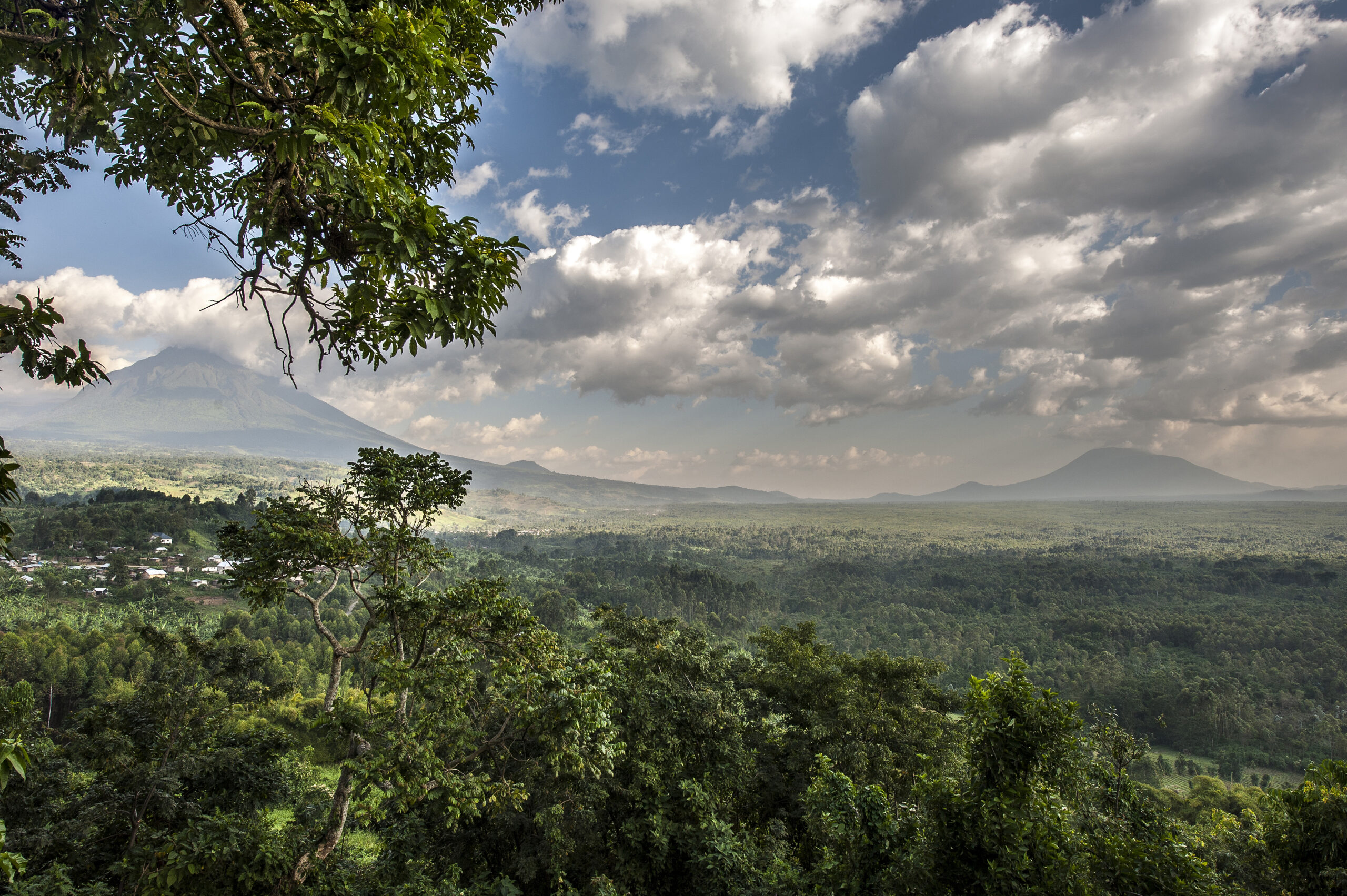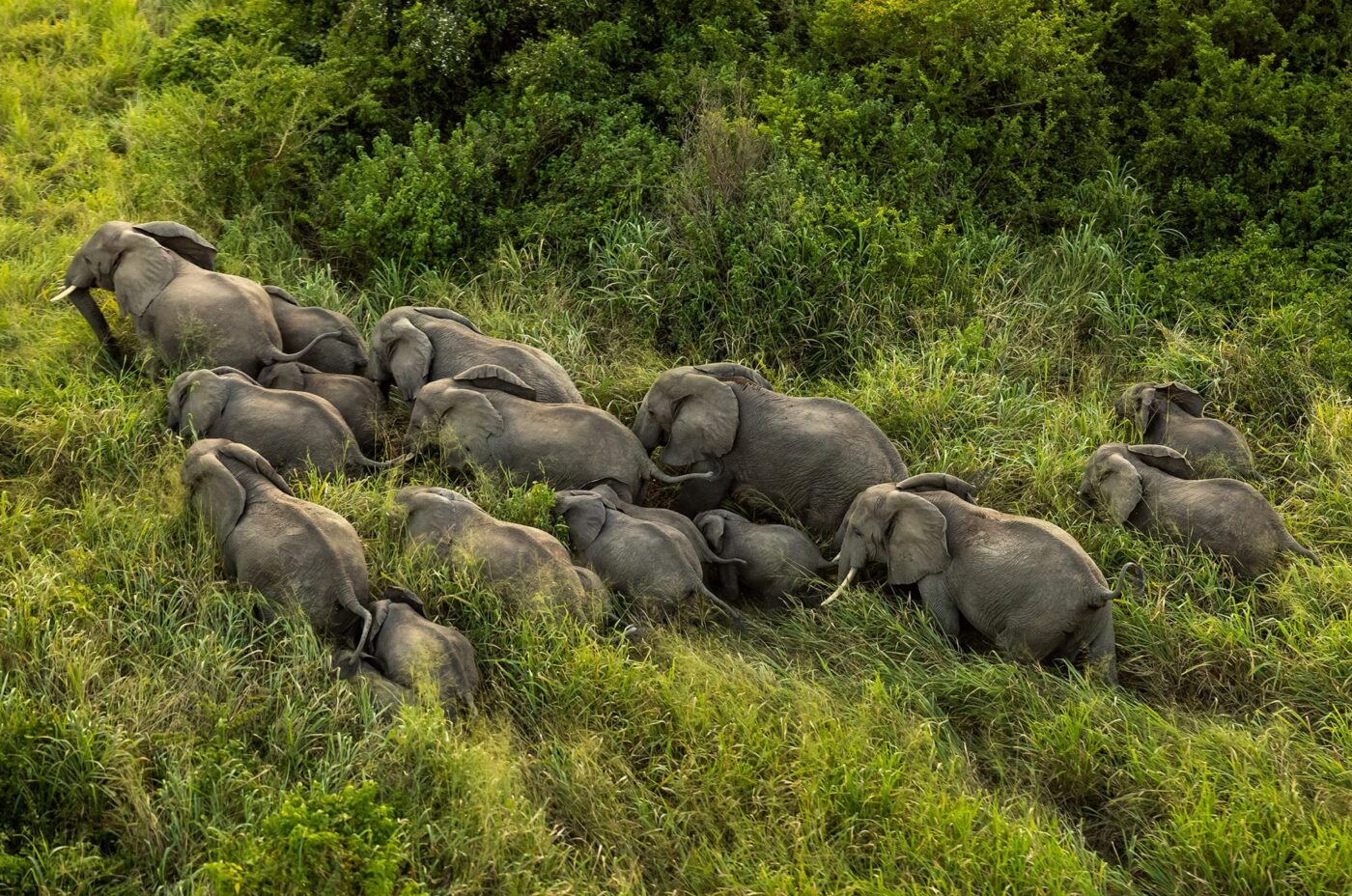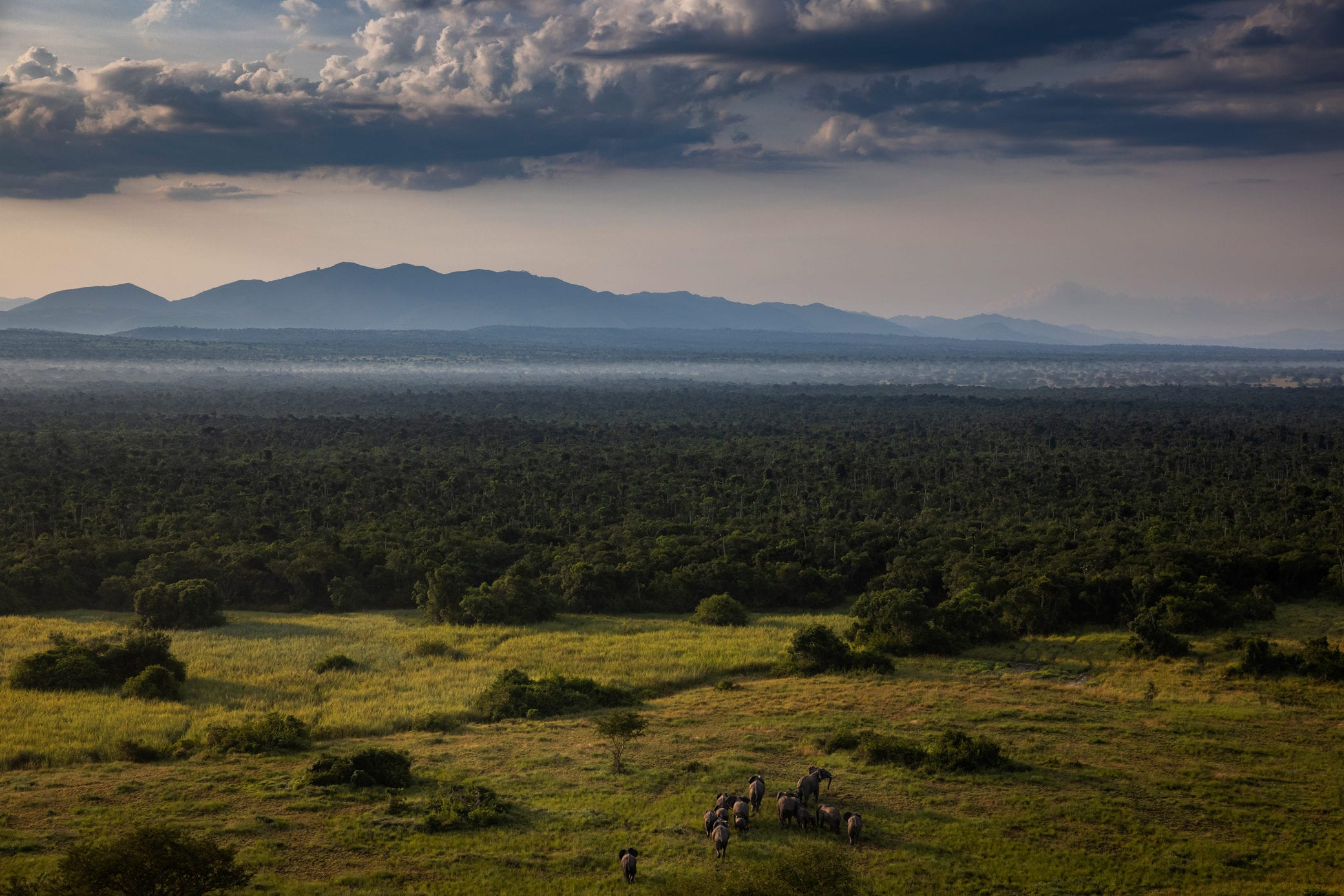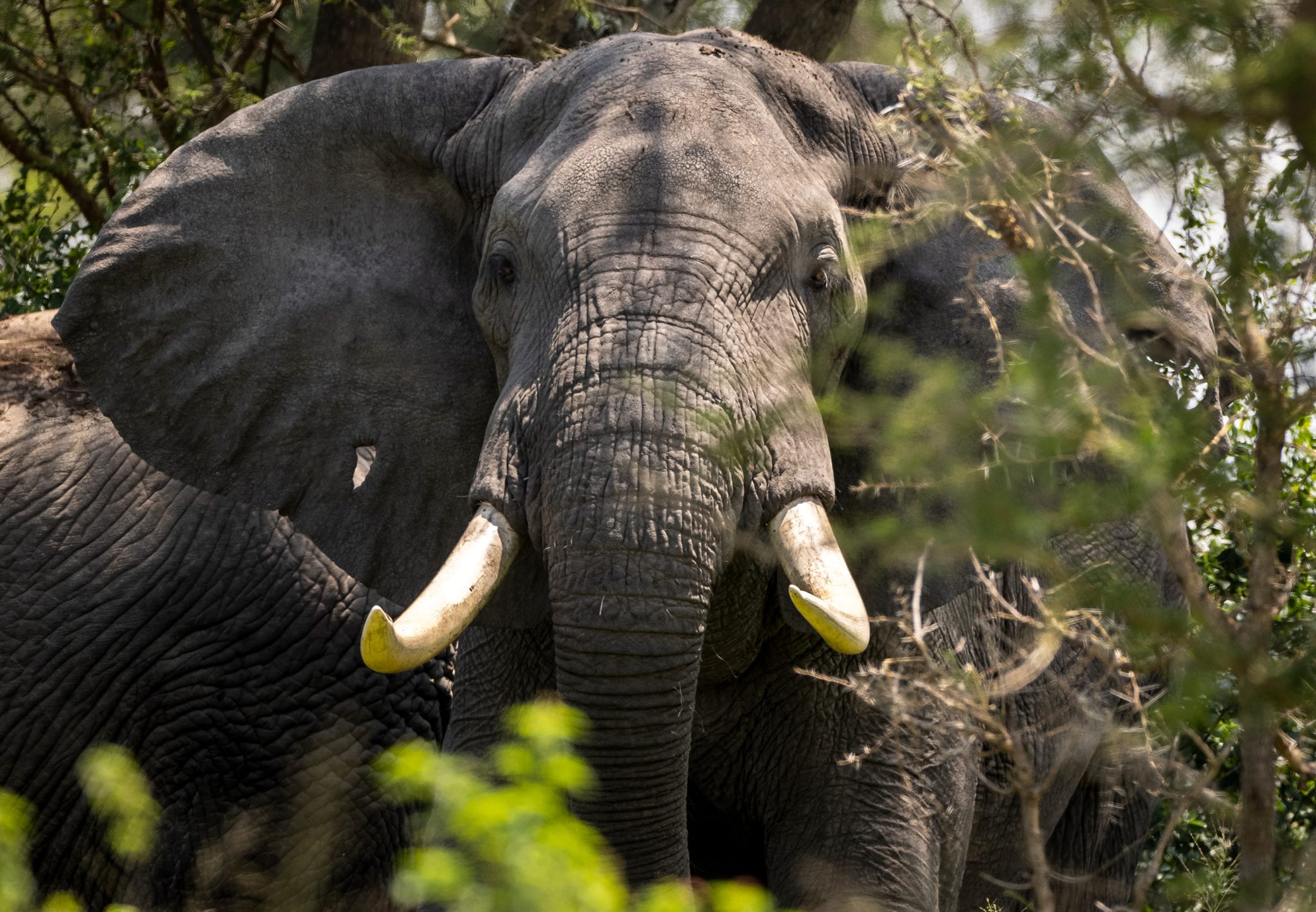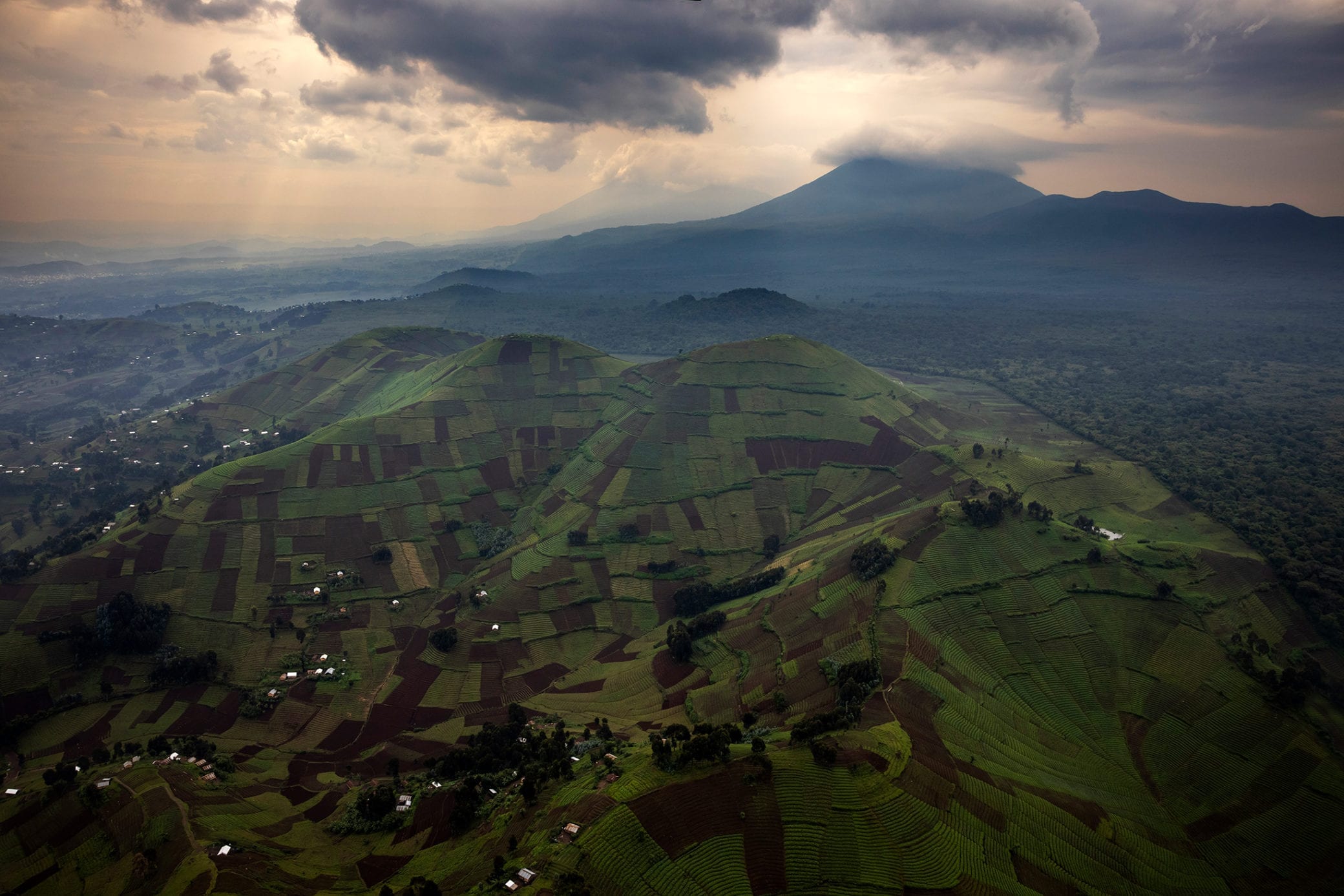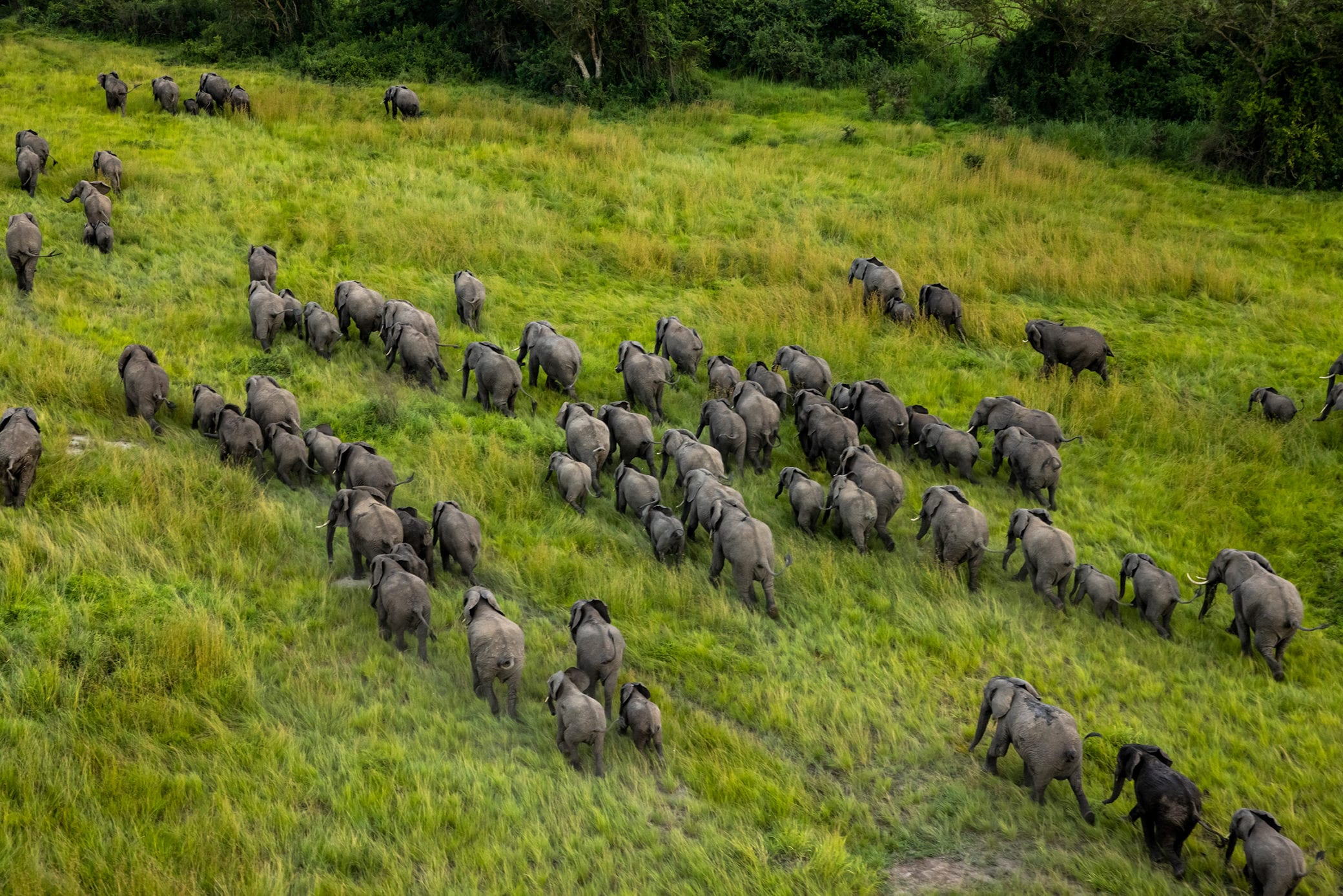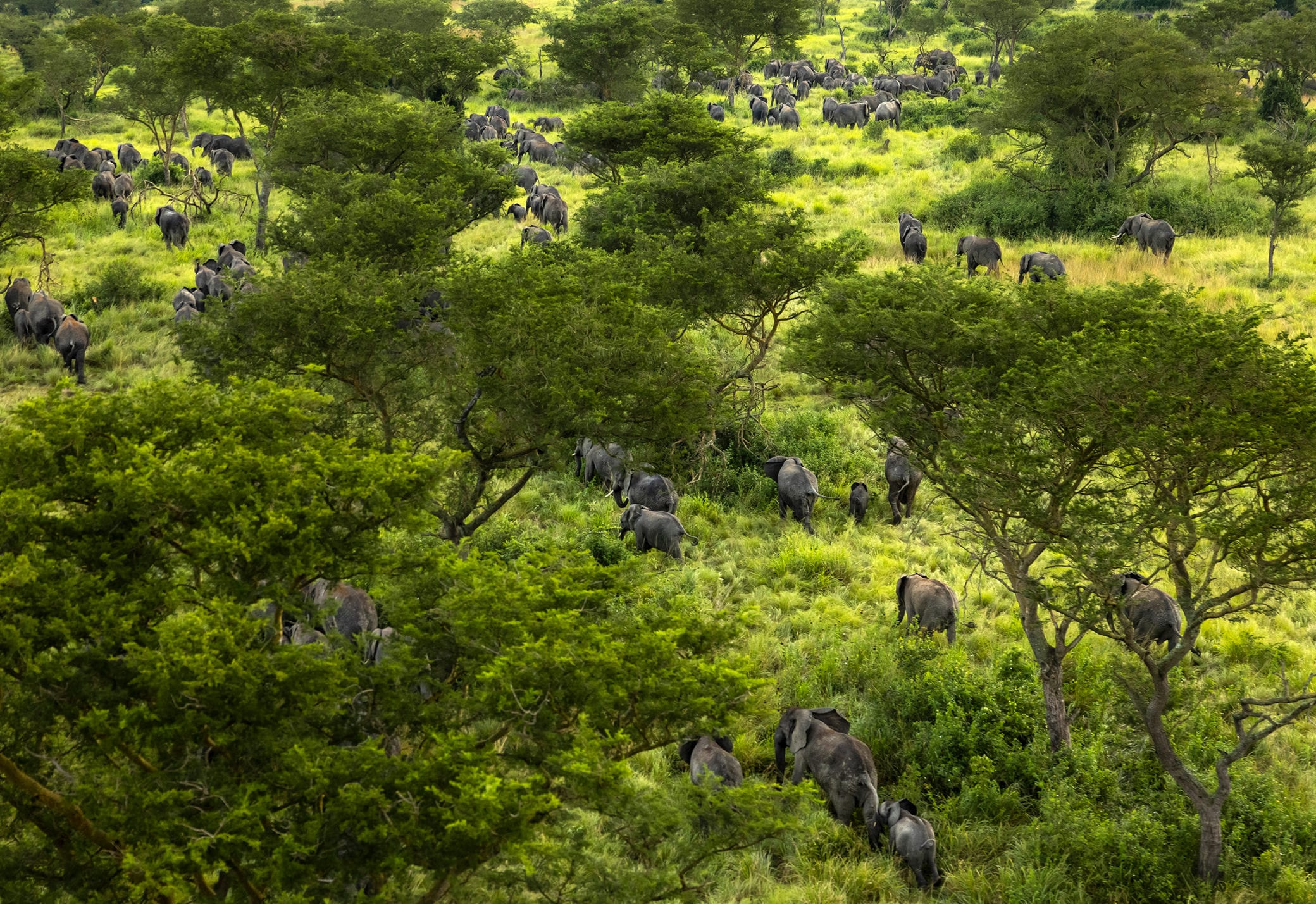Support Gorilla Conservation >
In the 1950s, there were around 8,000 African bush elephants roaming Virunga. Poaching, illegal agriculture and perpetual armed conflict since the mid-90s have led to a decline in the population within the Park’s boundaries.
In 2009, rebel forces began dispersing from the Park, allowing Virunga, its Rangers and local people to work together on developmental initiatives that create conditions favourable to elephants. In 2020, 580 African bush elephants migrated into the Park to form an aggregated herd of 700.
“The return of large elephant herds to Virunga is the outcome of decades of extraordinary efforts on the part of Congo’s Park Rangers,” cites Emmanuel de Merode, Director of Virunga National Park.
As well as being an awesome spectacle, the herds bring benefits beyond the limits of human intervention, rapidly rewilding the overgrown savanna, returning it to grassland and attracting smaller grazing herbivores.
In the wake of COVID-19, its detrimental impact on tourism and the loss of twelve Rangers in a rebel attack in April 2020, the return of elephants is a beacon of hope for Virunga. In the long term, they are expected to drive species diversity, attract tourists and bring further economic opportunities to local people.
